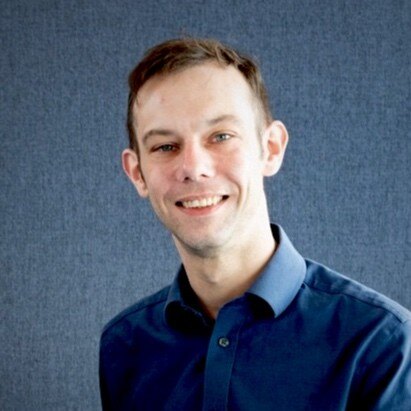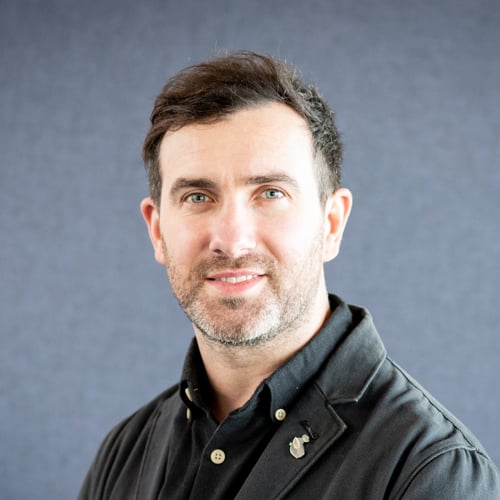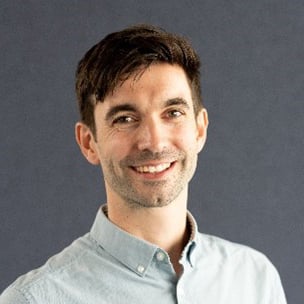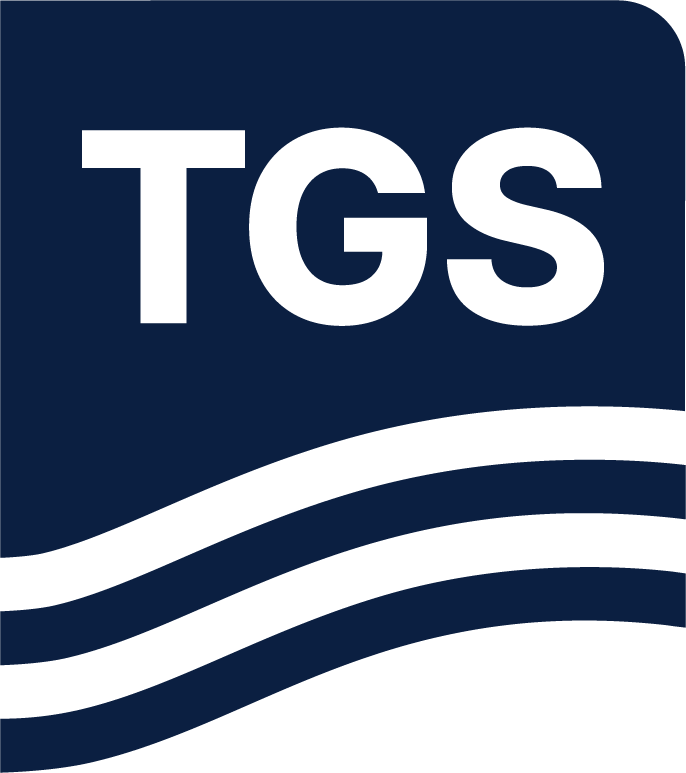Episode Summary
In Episode 3 of PowerPod, host Jamie Bernthal-Hooker is joined by Barry Frost and Luke Rushbrook to spotlight the critical yet often overlooked role of ports in the offshore wind sector. The discussion explores the infrastructure challenges, investment needs, and economic impacts of adapting ports for the next generation of offshore wind projects, emphasizing why strategic planning and collaboration are essential for meeting ambitious renewable energy targets.
Jamie Bernthal-Hooker (00:18)
Hello from TGS 4C Offshore, the market leaders in offshore wind intelligence and a proud part of TGS New Energy Solutions. My name is Jamie Bernthal Hooker and I work with the market research team at TGS 4C Offshore . Today I'm joined by two of my colleagues Barry Frost and Luke Rushbrook. Hello to you both. Would you like to introduce yourselves?
Barry Frost (00:40)
Thanks for the introduction, Jamie, my name is Barry Frost, and I am the champion for ports and vessels at TGS 4C offshore.
Luke Rushbrook (00:48)
Hi Jamie, I'm Luke. one of the research assistants at TGS 4C Offshore and my focus is on ports and vessels.
Jamie Bernthal-Hooker (00:56)
And you're both brilliant at it. Thank you. There's never a dull moment in offshore wind these days. Component costs under scrutiny, some major wind farms in the pipeline looking at the very least riskier than before, some perhaps exaggerated reports of the deaths of wind farms. There's a lot of conversation now, rightly, about individual projects and their components. But one extremely important element which rarely dominates the headlines is ports.
In Scotland, the Port of Leith has unveiled its Charles Hammond berth, a deep-water berth to accommodate the largest construction vessels, part of a £100 million investment from Forth Ports. In Norway, a market where offshore wind is still not here at scale, the operator Wind Port formed a strategic alliance with Denmark's more experienced port Esbjerg to build smarter. As turbines are getting bigger, timelines are getting shorter. Ports need attention, they need investment.
The European Commission says adapting a port for floating wind could cost around 200 million euros, while we're forecasting a multi-gigawatt scale build-out of floating wind in the 2030s. Targets are even more ambitious than that, and in some cases, they're looking hard to believe. So we'll start with you, Barry. I guess there's a gap, isn't there, between what's being targeted and what's credible with current port infrastructure?
Barry Frost (02:22)
Yeah, absolutely. And I think you nailed it just then by saying ports need attention, and I think it's something that's coming to the horizon at the moment. The problem arises when analyzing port capacity in relation to global and regional targets. There needs to be this investment into ports, there needs to be upgrades and there needs to be considerations down the line when thinking about possible delays. There is funding out there, you know, for example, the Crown Estate, they've got the supply chain accelerator that's now in its second round and there's a total of 15 million there which can be split over project and that's designed for the early stage of development of ports.
But you know, there's also some other considerations that need to be understood and accepted that includes port allocation. So which ports, if we're looking around Europe, are essential and need to have these upgrades. There's also the idea of having cluster ports and these ports will have the optimum location with the possibility of being the base port for more than one offshore wind farm.
But again, there's lots of implications that kind of tie in with that. And that includes things like if you've got vessels coming from multiple wind farms, does that increase the journey and the time and the distance to port? That's going to have implications on vessel emissions. You've got the EU emissions trading system coming in which limits the amount of greenhouse gases coming out of vessels. Operators are going to need to have permits per ton of greenhouse gas emissions, so there's lots of elements there. Other areas that need considering as well is the build time of ports. How long is it going to take to get the port up to spec, and what are those port requirements going to be? Is a port going to tailor folk or tailor itself purely for fixed bottom or is it going to be able to cater for floating? There are completely different requirements there.
And then essentially this leads onto that that that that topic of what is the port infrastructure going to be? And going down into the logistics and planning of what ports are going the requirements of these ports are going to be. So, you talk about load limits of the quayside, you talk about quayside height, which is obviously important in terms of the hook height of a vessel. Is the quayside too high? So, when, a component is up ended, are they going to be able to put that crane over the top of it and lift it onto deck? So, lots of different elements there.
And then finally it's looking at that turnaround time and potential port congestions. If you've got multiple vessels coming into a port at the same time because of this cluster port, is that going to cause congestion? If you've got an increased number of components coming into the into the port area, have you got the storage capacity to store all of these effectively? You throw into that mix then several possibilities that might add to delays to that, for example, bad weather or a delay in manufacturing. The potential leads towards possible delays and I think there needs to be considerations looking as far ahead as we can really, using the investment to essentially write off some as many of these delays as possible....
Jamie Bernthal-Hooker (05:52)
So a really, really complex picture. That's brilliant. Thank you. So you've talked a little bit about what's being done and a lot of the challenges faced, but Luke, could you maybe talk a little bit more about what's being done and whether it's enough?
Luke Rushbrook (06:08)
Yeah, sure. So currently there are many ports which are working on expanding their capacities to meet future demands and current demands. But these developments will take time as Barry touched upon there. And delays have been seen in getting the required investment which is needed for port upgrades. So firstly though, to look at some of the positives.
Here in the UK, there has been recent investment in ports such as Ardersier, Leith, as you mentioned, Jamie, and also Cromarty Firth and Port Talbot, which received funding under the Flomis scheme. So, to look at these in a bit more detail, Ardersier, Haventus, who is the port owner, reached final investment decision last year and secured £100 million in funding, which was split evenly between the UK Infrastructure Bank and the Scottish National Investment Bank. And in addition to that funding, there is a further £300 million from a US private equity firm. So, really substantial investment there. And the new facility at Ardersier is expected to be fully operational in the second half of this year and will be the UK's first floating manufacturing hub. So, a real success story for Port Investment. Staying in Scotland at the Port of Leith, Forth Ports has invested over £100 million of private funds to develop the renewable hub at the port. And later this year, the Charles Hammond berth at Leith will be used in the delivery of the Inch Cape wind farm.
Also, early in May of this year, PD ports announced development plans for the Teesport Offshore Gateway, which aims to be one of the UK's largest manufacturing and installation hubs for offshore wind. Total investment for that project is estimated at around $200 million.
PD Port is looking for funding opportunities from OEMs, developers and the UK government. I should mention ⁓ the UK government usually acts as a cornerstone investor to make further investments more favorable to the private sector. So generally, Port developments are majority privately funded. And for Teesport, the development plans are still in an early stage, so they're subject to consent approvals, which can be a time-consuming process.
So, these were some current port developments and investments which we've seen in the UK, but many ports are still in need of infrastructure improvements to meet demands for future projects, particularly for floating offshore wind, as you mentioned, Barry. And with floating, it requires a lot more infrastructure, such as the water depths, the reinforced quay areas, and crane capacities.
So going forward to meet the floating targets, the UK is going to need at least three ports, but most likely more than three, which will be ready for gigawatt scale floating projects. And the timeframe we often see quoted for large scale floating development support is usually around five years for construction. So, as I mentioned, Ardersier should be operational this year. Cromarty Firth is aiming to be ready for floating projects in 2028, and Port Talbot will start its main construction for floating in 2027. So, while these ports might be ready just in time, the UK floating target of 5 gigawatts by 2030 is looking increasingly unlikely. But I know something which is talked a lot about in the industry is the multi-port strategy to deliver projects, particularly for floating.
Jamie Bernthal-Hooker (09:51)
Could you just talk us through what multiport strategies are?
Luke Rushbrook (09:55)
Yeah, sure. Essentially, multi-port strategies are using multiple ports for different roles throughout the lifecycle of an offshore wind farm. So, there could be ports for manufacturing, assembly of components, and O&M, things like that. So rather than using just a single hub, a singular port, there are different ports involved. So, I was going to mention that to you, Barry. Is that something you think we'll see more of going forward?
Barry Frost (10:25)
It's a really interesting one because there's so many implications to it, right? And you can understand from face value how that might solve some of the problems right now. You're almost spreading the load of the logistics, the load that's placed on individual ports in order to marry that up at the um at the site location. But there's also a lot of implications there. Again, like we touched about is like you've got vessels traveling a lot more, going a lot further. Logistically from a component point of view, that you're having to have multiple locations, you're having to organize the transport of components to multiple locations, even to the point of crewing vessels that needs to be a consideration.
So, I think from a more of a logistical point of view, that becomes a far greater job. It's that risk reward, right? So, what might work very smoothly when you don't have external factors adding delays, it you know, from the outset might be really rewarding and allow the construction to happen on time. If a small delay creeps in somewhere in that in the supply chain or within the project construction phase, I feel like there might be almost like a domino effect where that will significantly push completion and then ultimately that can have knock on effects on other projects as well.
So, if you're if you're using a port for a significant factor in in terms of construction, in conjunction with another developer or another wind farm which is also being constructed, that could have effects on that as well. So, I think from on the face of it, there is a possibility of it working, but again, it comes down to that that forward thinking and then that planning and that that logistical element which really needs considering before, you know, we just jump through it.
Luke Rushbrook (12:25)
Yeah, sure. I guess especially for floating with components which might not be standardized yet, it's going to potentially be useful to have different ports being able to provide different components for one project. But I see what you're saying, Barry, with logistical issues, could lead to more delays, things like that, especially when we don't have too many ports at the moment, which are suitable for these large-scale floating projects. It might be more of a short-term solution. And then once the port facilities become available, we'll see where it goes from there.
Barry Frost (13:03)
Yeah, if we were in a situation where we had five or six fully established floating ports, I think this wouldn't be a discussion. And even in eight to 10 years, you know, we'd hope that we again wouldn't be having a discussion like this, but it's about having those taking those actions now in order to use the investment, get the development of these ports up and running. So, you know, come that pinch point around 2030, we're in a much better position.
Luke Rushbrook (13:35)
Sure. I guess something which is talked about a lot is how geography is really a factor for these floating projects because, especially for the integration port, putting the turbines and foundations together, it's going to need to be quite close to where the projects are, close proximity to them. So, if we have a good spread of these ports around the country, that will be less of an issue. But could, throw a spanner in the works, I guess, if turbines are having to be towed down from Scotland.
Jamie Bernthal-Hooker (14:09)
Yeah, that's great. There's so much there. Hundreds of millions of pounds of investments, hundreds of millions of pounds of investments still needed. A lot of strategy and a lot of things still to be determined. And citing those ports, whether it's multiport or purpose-built ports is such an important thing and such a long-term commitment. And risk has to be very carefully managed. How do we pick suitable ports for offshore wind and determine what upgrades are needed. mean, all the different elements of offshore wind land move so quickly and at their own rates and we're seeing the turbines getting bigger. How do we know the port will still be fit for purpose by the time it's built?
Luke Rushbrook (14:55)
Yeah, that's a good question, Jamie. So, like you said, understanding the current and future capabilities of ports is critical for these projects, fixed and floating. So, what we're working on here at TGS 4C Offshore is using AI tools to deliver a new port product, which will provide all the relevant data for ports in offshore wind.
Jamie Bernthal-Hooker (15:19)
Nice. Yeah, there is a critical need, isn't there, for data?
Barry Frost (15:26)
Yeah, absolutely. There's a few elements there that will ultimately affect where a port is going to be upgraded or a new port's going to be constructed. From the outset, high CAPEX costs are obviously a concern and a huge consideration. Within that you throw in a little bit of market uncertainty, so that can be regional as well. That's certainly going to have an impact. And we also sort of seeing that on different other parts that that kind of fall together within the construction of a wind farm and that includes for example, the big heavy lift vessels. So, this construction and heavy lift vessels, there's a need for more of them, specifically foundation installation vessels, but it's such significant CAPEX costs that need to come in to get that without a certain guarantee of award because it because of the construction time.
And it's a similar sort of thing that I think can be applied in terms of these ports. Another focus as well is there seems to be more of a focus at the moment generally on the project and not the infrastructure that supports it. And again, it’s visible in not securing the right projects at the right time. And I feel that this does play a part, significally with ports. By investing in the ports, that have the required capabilities to meet regional and global targets, it’s going to be essential to keep those targets on point and not pushing them back and having significant delays.
Jamie Bernthal-Hooker (17:00)
So, we're recording from a coastal port town, Lowestoft, and we can see a lot of work in the port at the moment. We can see that it creates local jobs, local industry. There's a whole industry building up around here. It's important, isn't it, to think about that community and that impact on the economy and the workforce when building ports.
Barry Frost (15:26)
Absolutely, I`ve been fortunate to have a lot of that construction work going on outside my office window. Yes, it is essential for the local community and economy. The port construction and the port maintenance, when looking more long term, has a value locally. There benefits to the area as well as training, skilled workers and other elements. You have jobs like marshaling, worker within the O&M, storage and logistics, there are so many opportunities that are created. But also jobs that will come available for people to work on the turbines themselves. There does need to be some care with this, and thorough planning is required.
What we have seen sometimes is the suggestion that this will be coming to a port somewhere in the UK, and then it gets`s retracted. So, it`s about being confident in that development and carrying it through. The local training required will also add some value. There have been recent discussions if local colleges can get involved, training facilities and that can ensure that standards are going to be met. But ultimately the consideration needs to be there in terms of future proofing these ports. Ensuring that these ports are there for the long term and the impact and the jobs that are created will remain available in the long term.
Jamie Bernthal-Hooker (19:05)
I feel like this is a conversation that's only going to get bigger. There is just time for some final thoughts. We'll start, I think, with Luke. What's your message for developers or anyone listening, really, on ports?
Luke Rushbrook (19:27)
Yeah, well, I think especially for offshore wind developers, they do need to keep in mind maybe at an earlier stage of what port infrastructure is going to be available for their projects. And it will be good to see greater collaboration between developers and port owners. I think that could really help to identify what infrastructure and development will be needed for future projects. And that will just benefit the industry overall.
Jamie Bernthal-Hooker (19:57)
Nice, and Barry.
Barry Frost (20:03)
For me it’s important that ports are an important element that needs to be on people’s radar. Without ports and without ports having the capabilities that are going to be required over the next 20 years, there’s going to be delays and there’s going to be significant impacts. So, it`s about prioritizing the impact of ports and invest. Get the investment, get the development going, get the upgrades started, so in the next years we got the port foundation to expand.
Jamie Bernthal-Hooker (20:50)
So, two definite calls there to action. And that is all we have time for today. So, thank you Barry and Luke for keeping me company.
Barry Frost (21:00)
Thank you.
Luke Rushbrook (21:01)
Thank you.
Jamie Bernthal-Hooker (21:02)
And thank you for listening. Now remember to subscribe so you don't miss another episode. If you have any thoughts we'd love to hear from you, please leave a review and feel free to reach out to us on LinkedIn. It's great to connect. Join us again next time for more chat around new energy solutions. Goodbye.
And thank you for listening. Now remember to subscribe so you don't miss another episode. If you have any thoughts we'd love to hear from you, please leave a review and feel free to reach out to us on LinkedIn. It's great to connect. Join us again next time for more chat around new energy solutions. Goodbye.
The Host

Jamie Bernthal-Hooker
Research Team Manager, 4CO Products
Tel: +44 1502 307037
jamie.bernthal-hooker@tgs.com
Featured Guests



